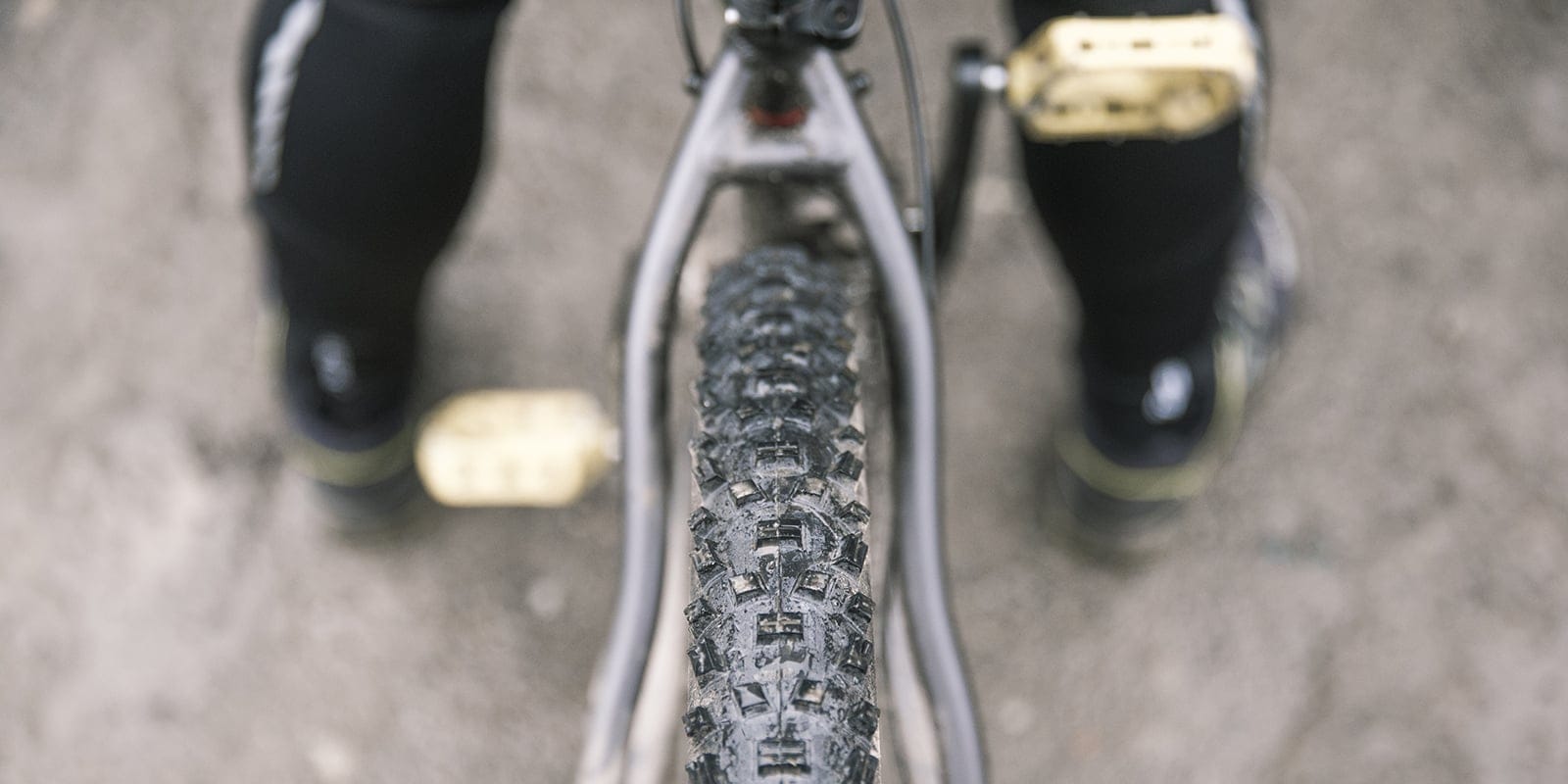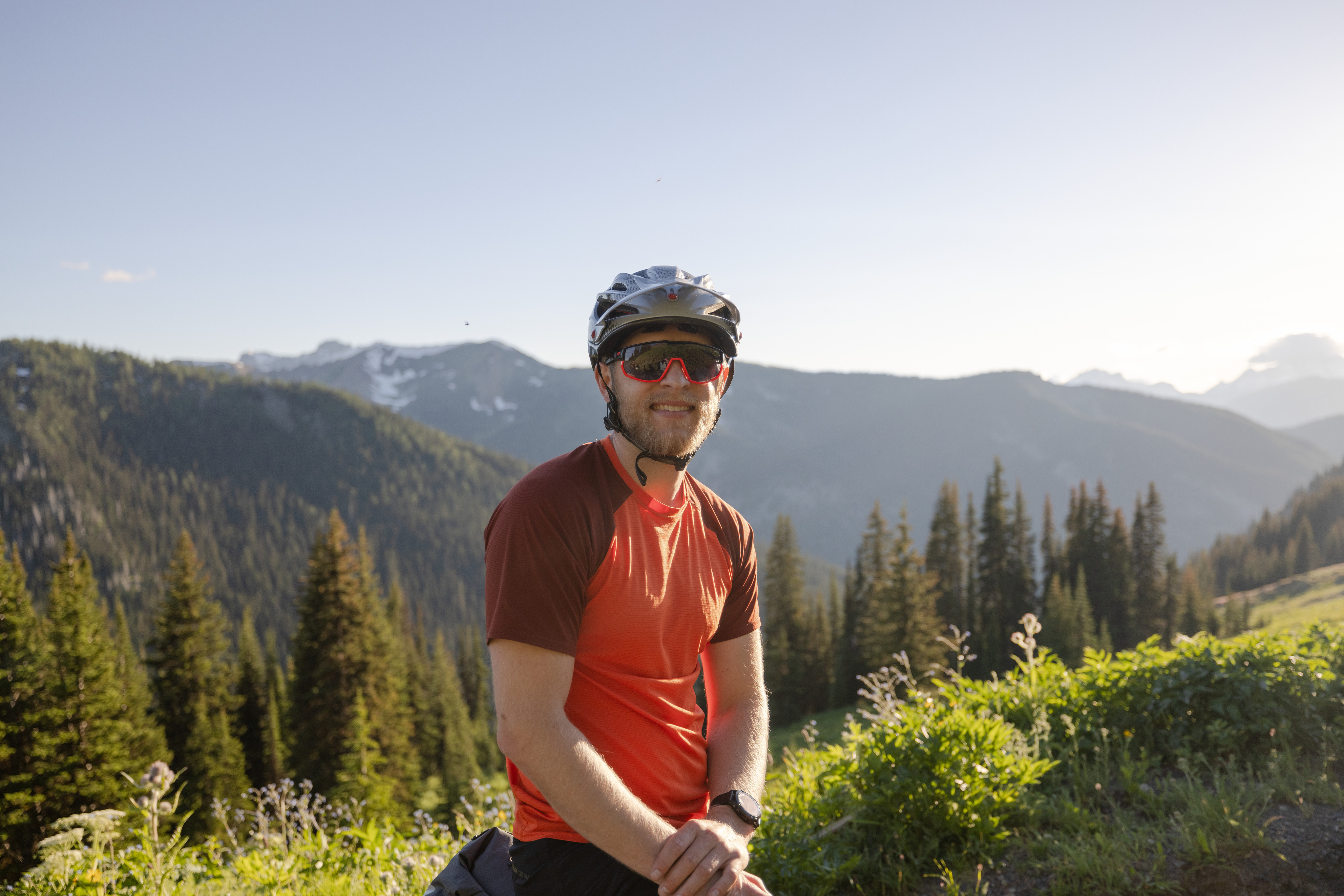If you've been mountain biking for a while and are feeling like it's time to up your game, a tire upgrade offers a lot of bang for the buck. How, you ask?
Gain traction or lower rolling resistance: Getting a tire with greater traction brings greater confidence, which translates to more fun and faster progression as a rider. If you have a need for speed, though, consider sacrificing a little grip to gain rolling efficiency.
Going tubeless means fewer flats: It won't end all flats, but tubeless sealant fixes some flats on the fly and you'll never have the dreaded pinch flat (no tube to pinch!). You can also ride with a much lower tire pressure, giving you a less bouncy ride and a better feel for the trail. Read more about the benefits of going tubeless.
Save some weight: Sometimes the benefit of going lighter is more psychological than physical—tires are a small percentage of overall bike weight. That said, grams add up and lowering mass in rotational components (wheels, tires, cranks) can pay off because you expend less energy to move them.
Before you start shopping, check out our Bike Tires: How to Choose article to learn more about tire specs and terminology.
Mountain Bike Tire Size and Width
Once you've identified your tire diameter (29", 27.5" or 26"), you'll want to dial in your width:
- A cross-country bike will have tires in the 1.9" to 2.25" width range.
- Trail and all-mountain bikes will have tires in the 2.25" to 2.4" width range.
- Downhill bikes, which are meant to withstand the abuse of drops and rock gardens, are typically equipped with tires up to 2.5" wide.
- Fat-tire bikes, which can be used for all-season trail riding, have tire widths of 3.7" to 5" or more.
Consider wider tires: Though heavier, wider tires offer better traction (a plus for sand) for a more confident feel. They also accept more air volume to absorb bumps. You can go with a wider tire on a current rim or get wider rims to accommodate even wider tires.
Always verify clearances: With any new tire, especially a wider one, you need to be sure it has adequate clearance within your frame. For more details about wheel, tire and frame compatibility, see our Bike Wheels: How to Choose article.
Choosing Mountain Bike Tires by Riding Style
If you're unsure how you'd classify your riding style, check out our introductory mountain biking article. Because no tire excels at everything, you should focus on attributes that are most important for your riding style.
For cross-country riding, climbing efficiency is more important than traction or extra durability, so you want to look at tires that are lightweight and roll fast (look for smaller, more densely spaced lugs).
For trail riding, an all-around tire makes sense. You want a moderate level of traction, durability and speed.
Though you have to ride to the top, the focus for all-mountain biking is on descents. You need tires that grip well when you take turns at speed and tires that can withstand moderate impacts (look for bigger side lugs).
For downhill riding, you're getting a lift to the top, so you need a burly, tenacious set of tires for gravity-fueled fun. You need tires that can handle some abuse, stick landings and claw their way around turns.
How Tire Tread Affects Performance
The design of the knobs—or lugs—on a set of knobby mountain bike tires varies widely. Understanding how these and other tire features affect performance will help you match your tires to your riding style.
- Big, widely spaced lugs bite into soft, muddy ground; wide channels do a good job of releasing the muck.
- Small, closely spaced lugs offer modest grip with low rolling resistance (more speed).
- Ramped lugs (slanting rearward): Typically in the center, they lower rolling resistance to help you go faster.
- Side lugs: Typically bigger, they provide extra grip in corners.
- Transition lugs: Located between the center and side lugs, they increase grip as you lean into a turn; the result is a smoother transition from center lugs to side lugs.
- Sipes: These slits within the lugs help them have better grip on hard, slick surfaces.
Note: Many brands also classify or describe their tires according to the intended terrain.
Additional Mountain Bike Tire Features
Rubber Compounds
Brands devote a lot of research and development to their rubber compounds. They try to balance contradictory goals: good grip, long wear and low rolling resistance. Soft compounds will give you better grip, while a harder rubber will last longer and offer you lower rolling resistance.
Race tires often use a single compound that offers superior grip. But these single compound tires are usually worn out after a few rides.
One common design solution for nonracing tires is a dual-compound rubber. They have harder rubber in the center to help the tire roll faster and last longer. On the sides of the tire, the area of the tire most critical for cornering, is a softer rubber to provide more traction.
Puncture Resistance
A lot of alluring trails have jagged edges and thorns lying in wait. That's why so many riders gladly trade a little added weight for a lot of added protection.
Durable rubber helps, but the key to puncture protection lies within the casing. Having a 2-ply tire is one tactic. Reinforcements made of Kevlar® and other protective materials is another. Some tires place protection in just the sidewalls, which are especially vulnerable, while other tires are beefed up from bead to bead.
Mountain Bike Tire Shopping Tips
Start with one set of tires: While racers have tires for multiple situations, you can start with a single set of new tires. Think about how and where you usually ride. Then focus on the most challenging types of riding and terrain you plan to tackle.
Decide if you want to mix and match: It comes down to personal preference. Some riders prefer a tire with more traction up front and one with less rolling resistance in back. Some riders like the same surefootedness everywhere. Try it one way now and experiment with the other approach next time.
Talk with an REI bike specialist at REI: The experts there know the terrain in your area and can make recommendations or special order tires to meet your needs.



